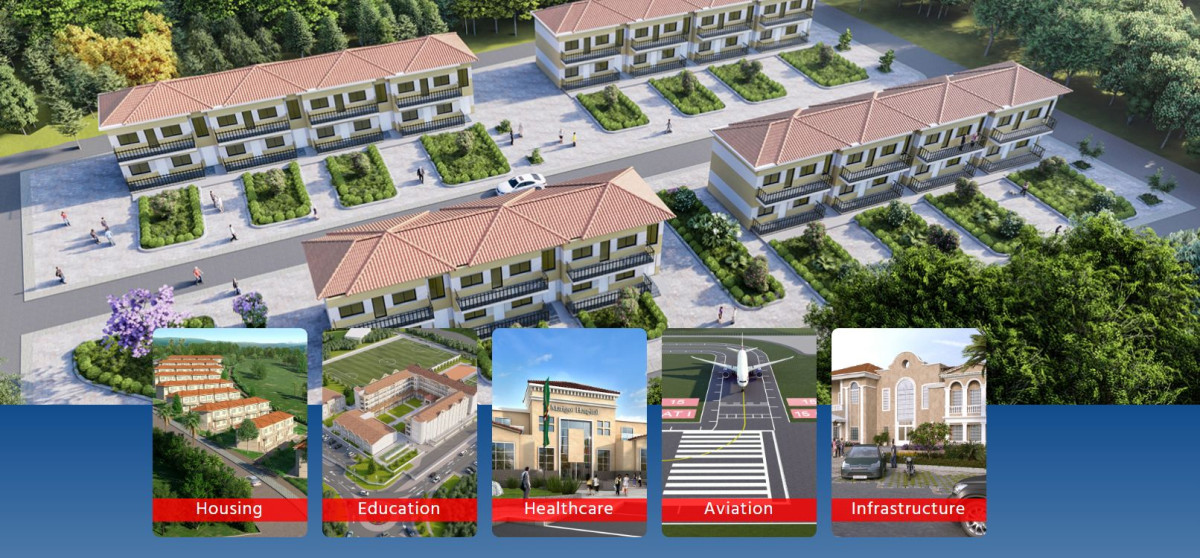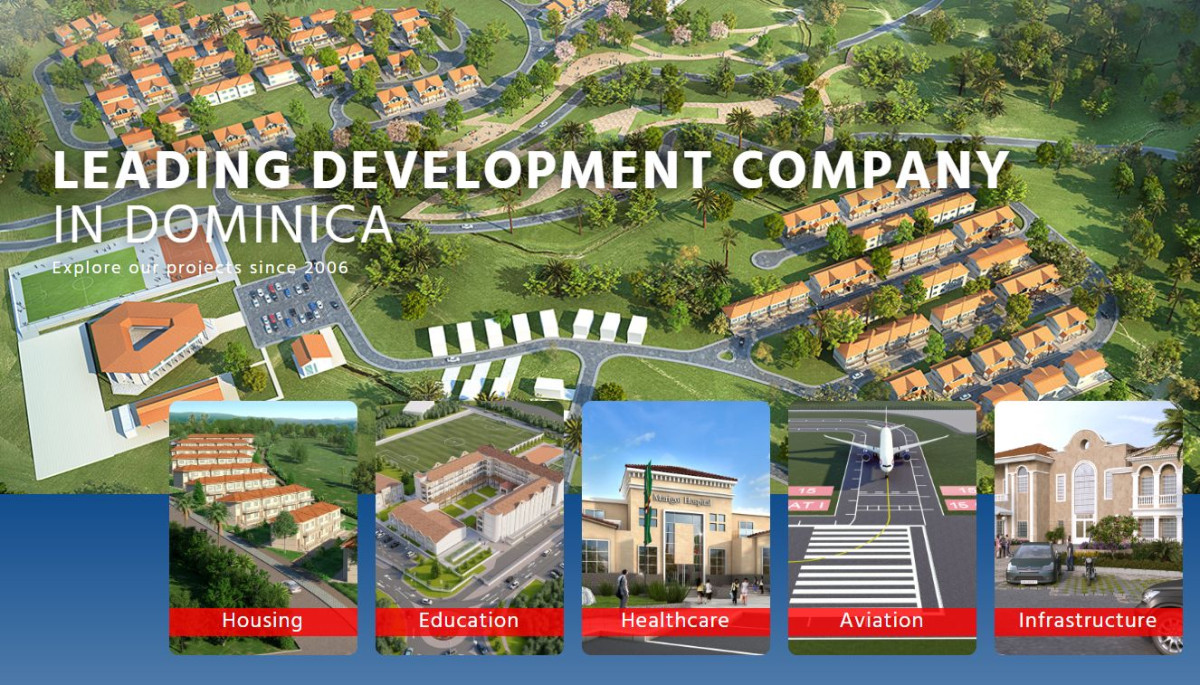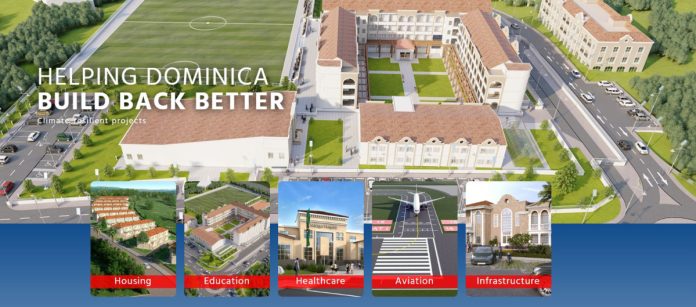By Caribbean News Global ![]()
ROSEAU, Dominica – Building on tropical storm Erika, 27 August 2015 and hurricane Maria 18 September 2017, Dominica continues to ‘build back better’ on resilient building practices to limit the damage from natural hazards.
Improving on lessons learned from Dominica’s vulnerability to natural hazards, required resilient building practices, building local capacity, and an integrated ‘build back better’ plan.

In so doing, the government of Dominica initiated multiple large-scale housing reconstruction programs and infrastructure developments. Through the mandate of the government of Dominica and trusted partners, MMC Development is continuously building fully integrated housing communities and a path to generational wealth for Dominicans.
Before the start of this year’s hurricane season, Ministry of Housing and Urban Development (MHUD), Melissa Skerrit, advised:
“ It is vital for Dominicans to take proactive steps in strengthening their homes and ensuring the safety of their families.”
The advice followed resource allocation by MHUD, providing vital supplies … for the upcoming 2023 hurricane season.
Of particular significance is Tropical Storm Bret, to form early in the season – making the June 2023 storm historic.
The current hurricane season gives reason to remember hurricane Maria which damaged or destroyed a staggering 95% of Dominica’s housing stock and 226 percent of the nation’s GDP.

In response to the destruction of Maria in 2018, Dominica released a climate resilience policy framework to guide its recovery journey in the form of the National Resilience Development Strategy 2030 (NRDS).
The NRDS articulates the overall policy framework of the government and outlines 43 resilience goals aimed at ensuring that development is people-centred. The NRDS stipulates that, at the highest level, the Climate Resilience and Recovery Plan (CRRP) should reflect three pillars of resilience, namely: (1) Climate Resilient Systems, (2) Prudent Disaster Risk Management Systems, and (3) Effective Disaster Response and Recovery.
Pillar 1: Climate Resilient Systems, covers a wide range of systems and processes that must have the capacity for adjusting to, and absorbing the impacts of, climate change—for instance, a robust financial system that is able to support other core elements of resilience.
Pillar 2: Prudent Disaster Risk Management, focuses on minimizing and managing, as best we can, the risks associated with climate-related disasters. This involves the development of a strong evidence base for decision-making.
Pillar 3: Effective Disaster Risk Response and Recovery, speaks to the post-disaster phase, minimizing disaster impacts and reducing the pain and the period of recovery.
The CRRP expands these three pillars into six results areas for a climate-resilient Dominica. Based on these six results areas, the government of Dominica committed to achieving 20 Climate Resilience targets by 2030, including ten critical high-impact climate resilience initiatives will be delivered as a matter of immediate priority.
Of the ten critical high-impact climate resilience initiatives the current hurricane season serves as a reminder and the progress made to date “building back better’.
Resilient housing scheme – CRRP 2018
“To transform the structural reliability of the nation’s housing to extreme weather and relocate those currently located in physically vulnerable locations. This programme will significantly transform the sector and allow the government to meet its target of 90 percent of housing stock to be resilient by 2030, through a combination of the construction of 5,000 new resilient homes for vulnerable citizens, updated building standards and fiscal incentives to assist homeowners to ensure that their homes are structurally resilient to a major storm event. Delivered by end 2023.”
Resilient Dominica Physical Plan – CRRP 2018
“A comprehensive plan that addresses all infrastructure -utilities, ports, roads, bridges, drainage, housing, schools, health centres, iv shelters, coastal, rivers and landslide risks – as well as the standards required to achieve resilience targets, must be prepared so that a structured approach to creating a resilient country can be implemented. This will result in a comprehensive capital works program to 2030 and beyond, facilitating the mobilization of financing for resilience. It will incorporate a modern information and communication technology (ICT) Network to offer reliable and resilient service amid a disaster. Plan delivered by mid-2021. Resilient infrastructure programme delivered by 2030.”
The Ministry of Housing and Urban Development (MHUD) is one of the primary agencies of government charged with the mandate to contribute to the socio-economic well-being of the people of Dominica by providing affordable housing to citizens while facilitating urban development and fostering responsible land use.
The work programme of the ministry, which hinges on the National Resilience Development Strategy (NRDS) – consistent with sustainable development goals enshrined in Agenda 2030 – provides a well-outlined strategy for building back better and a path for taking Dominica towards being the first climate-resilient nation.
The ministry’s plans and programmes for each 5-year strategic period will embrace and adopt the climate resilience vision captured in Dominica’s Climate Resilience and Recovery Plan (CRRP). This vision includes a central role of the housing sector in building a robust economy, strong communities, and well-planned and durable infrastructure along with national policy goals of poverty alleviation economic growth, and employment.

Revolutionize the housing conditions of Dominica while implementing the resilient physical plan – similar to other projects fulfilled by MMC Development Ltd., set the standards for social and economic recovery that has led to further international collaboration and partnerships.
There is an urgent need for regional governments to rethink climate spending, prioritize policies, embrace international collaboration and actively pursue cooperative climate initiatives.
Dominica’s NRDS and CRRP is practical in the Caribbean region – outside political boundaries to meet macroclimate objectives – while concurrently procuring socio-economic benefits.
Dominica’s plan to “build the first climate resilient nation in the world” with a concrete set of actions, while securing the country’s future and prioritising the well-being of its people – is well on the way.
A path from devastation to bankable climate resilience projects, premised on government leadership, quick response and expertise to execute projects. The removal of bottlenecks, adopting clear legal and regulatory financing; and strategy aptitude signals MMC, the ‘leading development company in Dominica’.







